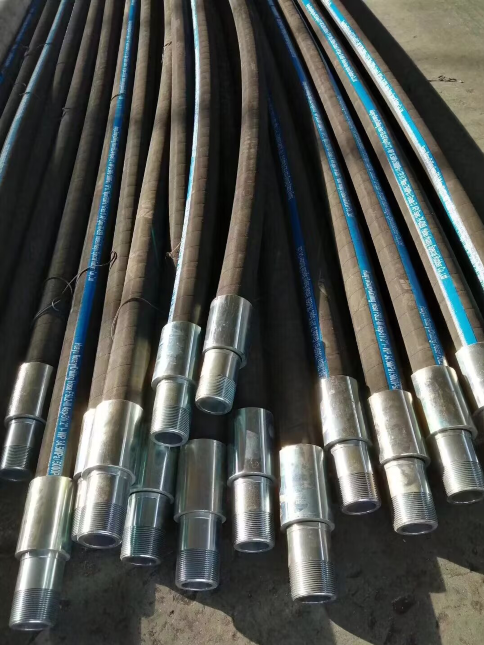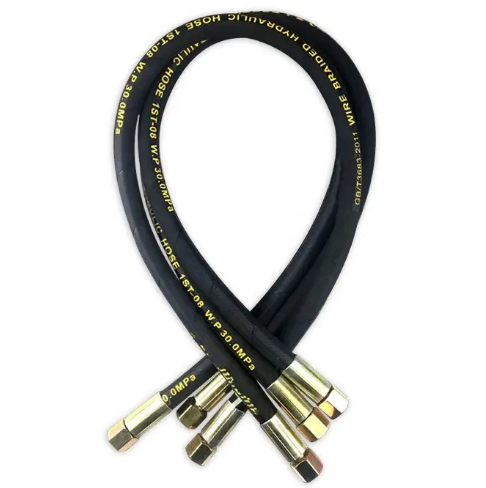How To Pick The Right High-Pressure Hose For You
High pressure hoses - the most important part of modern equipment, are widely used for all hydraulic systems, gas and water supply to deliver fluids under pressure (oils, fats, emulsions and others). However, selecting the right high-pressure hose for your specific needs can be a daunting task given the multitude of options available in the market. To ensure optimal performance and safety, it's essential to consider several factors before making a purchase. In this guide, we'll explore the key considerations to help you pick the perfect high-pressure hose for your requirements.

Understanding Your Requirements
Before diving into the technical aspects of high-pressure hoses, it's crucial to understand your specific application requirements. Ask yourself the following questions:
1. What fluid will the hose be carrying? Whether it's water, oil, chemicals, or other substances, the type of fluid will dictate the material compatibility and construction of the hose.
2. What pressure level is needed? High-pressure hoses come in a range of pressure ratings, so it's essential to know the maximum pressure your application demands.
3. What environmental conditions will the hose be exposed to? Consider factors such as temperature extremes, abrasion, exposure to UV radiation, and chemical exposure, as these can impact the lifespan and performance of the hose.
Choosing the Right Material
High-pressure hoses are typically constructed from various materials, each offering different properties suited to specific applications. The most common materials include:
1. Rubber: Rubber hoses are flexible, durable, and resistant to abrasion. They are suitable for a wide range of fluids and temperatures.
2. Thermoplastic: Thermoplastic hoses are lightweight, flexible, and resistant to chemicals and abrasion. They are often used in applications requiring tight bend radii and high flexibility.
3. Metal: Metal hoses, usually made of stainless steel, offer excellent strength and resistance to high temperatures and corrosion. They are ideal for extremely high-pressure applications and environments with high mechanical stress.
4. Hybrid: Hybrid hoses combine the properties of rubber and thermoplastic or metal, offering a balance of flexibility, durability, and pressure resistance.

Considerations for Hose End Fittings
Hose end fittings are crucial components that connect the high-pressure hose to other equipment or machinery. When selecting hose end fittings, consider the following factors:
1. Compatibility: Ensure that the fittings are compatible with both the hose and the equipment it will be connected to.
2. Type of Connection: Common types of hose end fittings include threaded, quick-connect, and flanged connections. Choose the type that best suits your application and installation requirements.
3. Material: Fittings are available in various materials, including brass, stainless steel, and plastic. Choose a material that offers the necessary strength and corrosion resistance for your application.
Assessing Safety and Compliance
Safety should always be a top priority when selecting a high-pressure hose. Look for hoses that comply with industry standards and regulations, such as those set by organizations like the Occupational Safety and Health Administration (OSHA) or the International Organization for Standardization (ISO). Additionally, consider features such as burst pressure ratings, pressure testing certifications, and pressure relief mechanisms to minimize the risk of accidents or injuries.
Maintenance and Service Life
Proper maintenance is essential to ensure the longevity and performance of your high-pressure hose. Regular inspection for signs of wear, damage, or degradation is crucial, and hoses should be replaced if any issues are detected. Additionally, follow manufacturer recommendations for storage, handling, and usage to maximize the service life of the hose.
Conclusion
Selecting the right high-pressure hose requires careful consideration of various factors, including application requirements, material compatibility, end fittings, safety, and maintenance. By understanding your specific needs and evaluating these key factors, you can choose a high-pressure hose that delivers optimal performance, durability, and safety for your application.
192
0
0







Comments
All Comments (0)